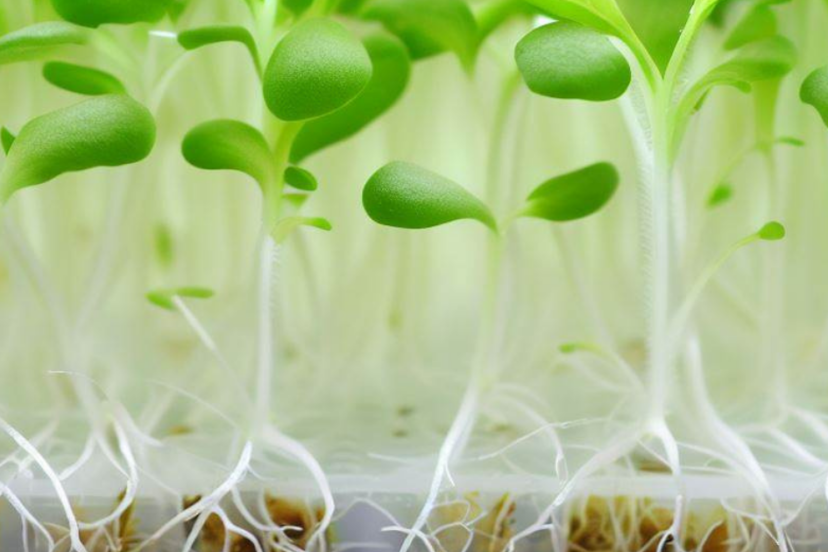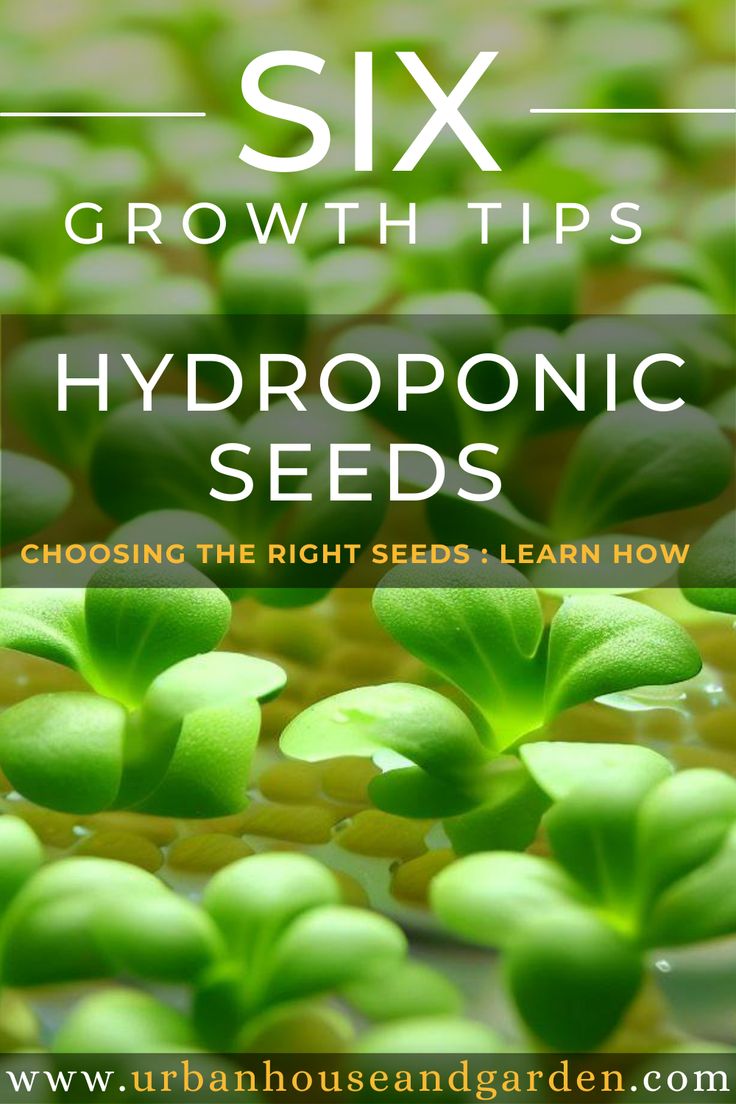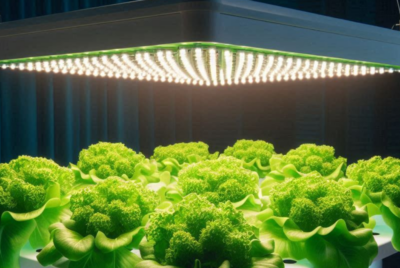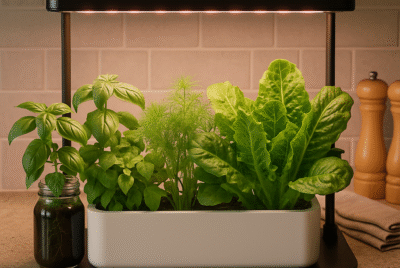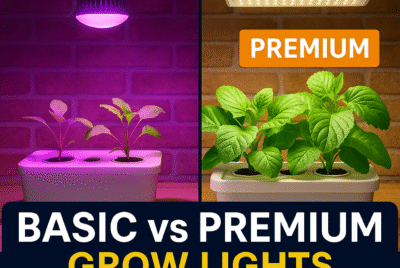Hydroponic Seedling: Dive in and grow your own!
Getting Started with Hydroponic Seedlings
Hydroponic seedlings offer a fascinating way to grow plants without soil, providing numerous benefits such as efficient resource utilization, controlled environments, and faster growth rates. I’m here to guide you through the process of nurturing successful hydroponic seedlings from start to finish.
Selecting the Right Seeds for Hydroponics
Before embarking on your hydroponic seedling journey, it’s essential to choose the right seeds suitable for this cultivation method. Opt for seeds labeled as “hydroponic-friendly” or “suitable for indoor gardening.” These seeds are specifically bred or selected to thrive in soilless environments, ensuring optimal results.
Preparing the Growing Medium
In hydroponics, the growing medium serves as a support structure for the seedlings and provides them with essential nutrients and oxygen. Popular options include rockwool cubes, coco coir, perlite, or vermiculite. Select a medium that retains moisture while allowing proper drainage to prevent waterlogging and root rot.
Providing Adequate Lighting and Temperature
Lighting plays a crucial role in hydroponic seedling growth. Ensure your seedlings receive sufficient light by using full-spectrum LED grow lights, positioned at an appropriate distance above the plants. Adjust the light duration based on the specific requirements of your chosen plant species. Additionally, maintain a consistent temperature range of 68-77°F (20-25 °C) during the seedling stage to promote healthy growth.
Monitoring and Adjusting Nutrient Levels
One of the key advantages of hydroponics is the ability to precisely control nutrient levels. Use a reputable hydroponic nutrient solution formulated for seedlings and follow the manufacturer’s instructions for dilution ratios. Regularly monitor the electrical conductivity (EC) and pH levels of the nutrient solution and make adjustments as needed to ensure optimal nutrient uptake.
Importance of Water Quality
Water quality is paramount in hydroponics, as it directly impacts the health and development of seedlings. Choose a clean and reliable water source, free from contaminants such as chlorine or heavy metals. Consider using filtered or reverse osmosis (RO) water if necessary. Test the pH of the water and adjust it to the appropriate range for your chosen plant species.
Germination Techniques for Hydroponic Seedlings
Proper germination is crucial for successful hydroponic seedling growth. Explore different germination methods to find the one that suits your needs:
Seed Soaking Method
Soak the seeds in water for a specified period, allowing them to absorb moisture and initiate germination. Transfer the pre-soaked seeds to your chosen growing medium once they’ve sprouted.
Rockwool Cube Method
Place seeds in pre-dampened rockwool cubes, which provide a sterile and moisture-retentive environment for germination. Keep the cubes moist and transfer the sprouted seedlings to your hydroponic system.
Paper Towel Method
Dampen a paper towel and place the seeds between the layers. Seal the towel in a plastic bag or container to maintain moisture and create a warm environment for germination. Transfer the sprouted seedlings to the growing medium.
Transplanting Seedlings into Hydroponic Systems
Once your hydroponic seedlings have germinated and developed their first set of true leaves, it’s time to transplant them into your hydroponic system.
Preparing the Hydroponic System
Ensure your hydroponic system is clean and functioning properly. Fill the reservoir with the appropriate nutrient solution and adjust the pH and EC levels accordingly. Set up any necessary support structures or trellises.
Handling Seedlings with Care
Gently remove the seedlings from their germination medium, taking care not to damage the delicate roots or leaves. Hold the seedlings by the leaves rather than the stem to prevent injury.
Properly Positioning the Seedlings
Place the seedlings in the designated growing sites or net pots, ensuring that the roots are fully submerged in the nutrient solution or properly supported by the growing medium. Avoid overcrowding to allow for adequate airflow and prevent the spread of diseases.
Providing Initial Support and Stability
Secure the seedlings in place using gentle ties or clips to prevent them from being dislodged or toppled over by water flow or environmental factors. This initial support will ensure the seedlings establish strong roots and maintain stability.
Nutrient Management for Healthy Seedling Growth
As your hydroponic seedlings continue to grow, proper nutrient management is essential for their overall health and development.
Understanding Essential Nutrients for Seedlings
Seedlings require a balanced combination of essential nutrients, including macronutrients (such as nitrogen, phosphorus, and potassium) and micronutrients (such as iron, manganese, and zinc). Familiarize yourself with the specific nutrient requirements of your chosen plant species.
Using Balanced Nutrient Solutions
Continuously monitor and maintain the nutrient solution’s pH, EC, and nutrient concentration levels within the recommended ranges for seedlings. Follow the instructions provided by the nutrient solution manufacturer and make adjustments as necessary to avoid deficiencies or toxicities.
Monitoring and Adjusting Nutrient Levels
Regularly check the pH and EC levels of the nutrient solution and make adjustments accordingly. Use a pH meter to measure the acidity or alkalinity of the solution and add pH-up or pH-down solutions as needed to keep it within the optimal range for your plants. Similarly, monitor the EC using an electrical conductivity meter to ensure the nutrient concentration is appropriate, and adjust it by diluting or adding more nutrient solution.
Preventing Nutrient Deficiencies and Toxicities
Be vigilant for signs of nutrient deficiencies or toxicities in your hydroponic seedlings. Common symptoms include yellowing or browning leaves, stunted growth, and wilting. Research and familiarize yourself with the specific nutrient-related issues that your plant species may encounter, and take corrective measures promptly.
Lighting Considerations for Hydroponic Seedlings
Providing adequate and appropriate lighting is vital for the healthy growth of your hydroponic seedlings.
Selecting Appropriate Grow Lights
Invest in full-spectrum LED hydroponic grow lights that mimic natural sunlight. These lights emit the necessary wavelengths for optimal plant growth and allow you to customize the light spectrum for different stages of growth.
Determining the Right Light Intensity and Duration
Seedlings require lower light intensity compared to mature plants. Adjust the distance between the grow lights and the seedlings accordingly, following the manufacturer’s guidelines. Start with a light duration of 14-16 hours per day and gradually increase it as the seedlings grow.
Managing Light Distance and Angle
Maintain an appropriate distance between the grow lights and the seedlings to prevent light burn or heat stress. Adjust the height of the lights as the seedlings grow taller. Position the lights at an angle that ensures uniform coverage and minimizes shadows.
Considering Supplemental Lighting Options
In some cases, natural lighting may be insufficient for optimal seedling growth. Supplemental lighting, such as fluorescent or compact fluorescent lights, can be used to provide additional light in areas where natural light is limited.
Maintaining Optimal Environmental Conditions
Creating and maintaining favorable environmental conditions within your hydroponic setup is crucial for the success of your seedlings.
Managing Temperature and Humidity
Maintain a temperature range of 68-77°F (20-25°C) during the day and slightly cooler temperatures at night. This helps ensure proper physiological processes and prevents stress on the seedlings. Monitor humidity levels and aim for a range of 50-70% to prevent excessive moisture loss.
Ventilation and Air Circulation
Proper air circulation is essential for preventing the buildup of heat, humidity, and carbon dioxide around the seedlings. Use fans or ventilation systems to ensure fresh air exchange and reduce the risk of mold or fungal growth.
Preventing Pests and Diseases
Implement preventive measures to keep pests and diseases at bay. Regularly inspect your hydroponic system and seedlings for any signs of infestation or infection. Maintain cleanliness, practice good hygiene, and consider using organic pest control methods or beneficial insects.
Maintaining a Clean and Sterile Environment
Maintaining a clean and sterile environment is crucial in hydroponics to prevent the spread of diseases and ensure the health of your seedlings. Regularly clean and sanitize your hydroponic system, tools, and growing surfaces. Use sterile or properly disinfected mediums and avoid introducing contaminants.
Troubleshooting Common Issues with Hydroponic Seedlings
Despite your best efforts, challenges may arise during the growth of your hydroponic seedlings. Here are some common issues and possible solutions:
Nutrient Deficiencies and Excesses
Monitor your seedlings for signs of nutrient deficiencies, such as yellowing leaves or stunted growth. Adjust the nutrient solution accordingly to address any deficiencies. However, be cautious not to overcompensate and create nutrient excesses, which can be equally damaging to the seedlings. Continuously monitor and maintain a balanced nutrient solution to avoid both deficiencies and excesses.
Pests and Diseases
If you notice signs of pests or diseases, take immediate action to prevent further damage. Depending on the specific issue, you can try organic pest control methods, such as introducing beneficial insects or using insecticidal soaps. For diseases, remove and dispose of infected plants, sterilize affected areas, and consider using disease-resistant seed varieties.
Overwatering and Root Rot
Overwatering can lead to waterlogged growing media and oxygen deprivation for the roots, which can result in root rot. Ensure proper drainage in your hydroponic system and allow the growing medium to partially dry out between watering cycles. Monitor the moisture levels of the growing medium and adjust your watering schedule accordingly.
Light-Related Problems
Improper lighting can cause issues like stunted growth or elongation of seedlings. Adjust the distance between the grow lights and the seedlings to provide the right light intensity. If seedlings are leaning towards the light source, rotate the trays regularly to ensure even exposure. Additionally, ensure that your grow lights are functioning properly and replace any faulty bulbs.
Conclusion
Successfully nurturing hydroponic seedlings requires careful attention to various factors, from selecting the right seeds to providing optimal growing conditions. By following the tips and techniques outlined in this article, you can embark on a rewarding journey of growing thriving hydroponic seedlings. Enjoy the benefits of hydroponic gardening and the satisfaction of harvesting your own homegrown produce.
FAQs
1. Can I use regular seeds for hydroponic seedlings?
Yes, you can use regular seeds for hydroponic seedlings. However, it’s advisable to choose seeds labeled as suitable for hydroponics or indoor gardening to ensure better adaptability to soilless environments.
2. How often should I adjust the nutrient levels in my hydroponic system?
Regularly monitor the pH and EC levels of your nutrient solution and make adjustments as needed. This can vary depending on the specific needs of your plant species, but it’s generally recommended to check and adjust every few days.
3. Can I reuse the growing medium for multiple seedlings?
It’s possible to reuse certain growing mediums, such as rockwool cubes, with proper sterilization between uses. However, it’s important to ensure that the medium remains free from pests, diseases, and nutrient buildup.
4. What are the advantages of hydroponic seedlings over traditional soil-based gardening?
Hydroponic seedlings offer advantages such as efficient resource utilization, faster growth rates, controlled environments, and the ability to grow plants in limited spaces or unfavorable climates. They also minimize the risk of soil-borne diseases and allow for precise nutrient management.
5. Can I grow any plant as a hydroponic seedling?
While many plants can be grown hydroponically, some are better suited for this cultivation method than others. Leafy greens (hydroponic lettuce), herbs, and certain vegetables like hydroponic tomatoes and peppers are popular choices for hydroponic cultivation. Research the specific requirements of the plants you intend to grow to ensure success.
*We may earn a commission from purchases made through our links, at no cost to you. This does not affect our product recommendations. Please see our disclosure to learn more.

